Planning for Tibet Tour? Looking for top things to do in Tibet? So here is our list of top 10 Attractions in Tibet.
1. Namcha Barwa Mountain
Nyingchi, which literally means “throne of the sun” in Tibetan has a relatively lower altitude bestowed with the green mountain slopes, snow-capped peaks and crystal-clear rivers. Nyingchi is dubbed as “Switzerland of Tibet”. The county boasts the Namjiagbarwa Peak, and the Yarlung Zangbo Great Canyon, and the abundant nature resources.
At the distance of 457km west of Lhasa, you reach the Serjila Pass (the Seche La Pass) at the elevation of 5020m where you will be lucky to see the golden summit of Namcha Barwa Mountain (or Namchabarwa and the Namjiagbarwa Peak).
Namchabarwa (7787 m) is selected as the most beautiful mountain in China.
Check out 4 Wheel Drive to Namcha Barwa Mountain for more information.

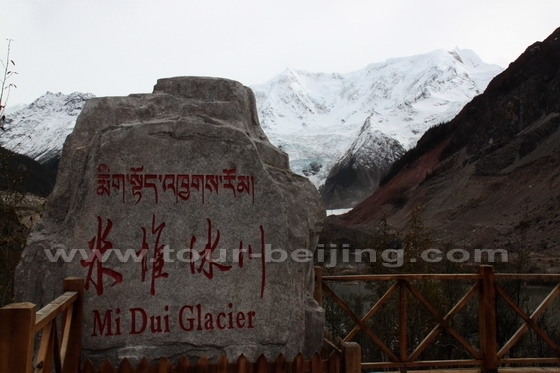
3. Mt.Everest Base Camp
We left Baiba Township and drove along the National Highway 318 down to the south for about 10km, then we had to stop for border check at Lugonggong Police Checkpost. Everybody on the bus must get off and wait in line inside the check building for check one by one. After we came back from Mt.Everest Base Camp to Baiba Township, we would have to do the same check again. As a foreigner, you must have two permits – Travel Tibet Permit and Alien Travel Permit.
The moment we touched on the mountain road, we realized that why the 100km Everest Base Camp Road would take 5 or 6 hours for a bus trip. The dirt road condition was terrible, tough, harsh, bumpy like a washing board with a corrugated surface and some full of potholes!
Just over the Gula Pass 5200m, there was a open platform for people to park and view the magnificent Mt.Everest and other peaks. All of us were amazed by the view unfolding before us and couldn’t belive the beautiful views of the snow mountains were real! It was so beautiful!
The Mt.Everrest Base Camp is about 8km south of Rongbuk Monastery. In the middle of the way between the Camp and the Monastery, there is a “Tent Community”, also known in the tourist book as “Za-Rombuk”. The “tent community” is set up by locals for 6 months of each year. The tents in Za-Rombuk seems cozy and warmer, and friendly. Climbers or leisure travlers share their temporary home. The tents are windproof, spacious. Heating comes from the stove in the middle of the room which burns yak and goat dung.
Check out Mt.Everest Trip for more information.
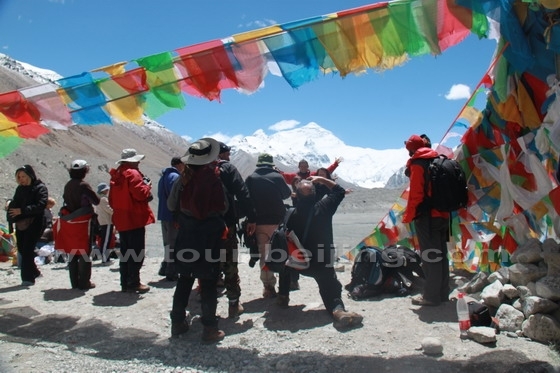
4. Mt.Kailash
Location: Mt.Kailash is located in the north of Pulan county in Tibet. It is the second highest peak (6721m) in the Gangdisê Mountains which runs parallel to the Himalayan mountains. Mt.Kailash is considered to be the “Holy Mountain” for the four religions: Bön, Buddhism, Hinduism, Jainism and prayed by the pilgrims from the neighbouring countries like Tibet, Nepal, India.
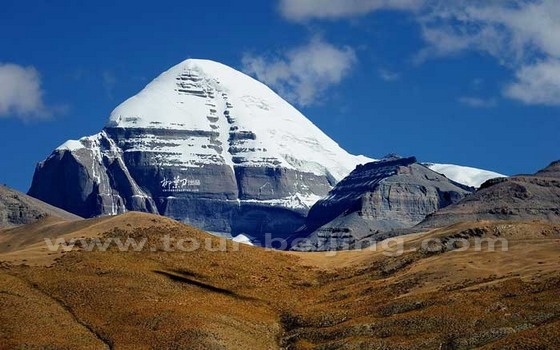
5. Namtso Lake
Lying between Baingoin County of Nagqu Prefecture and Damxung (Damshung) County of Lhasa Prefenture, Namtso Lake is located about 240km to the northwest of Lhasa city.
Namtso Lake literally means “the heavenly lake”, a mountain lake perched on the north of the Nyainqêntanglha range with a sea-level of 4,718m and a surface area of 1,920 square kilometres. It is often quoted as the second largest salt lake (after Qinghai Lake) in China and the highest salt lake of the size in the world. Accompanied by the massive Nyainqêntanglha range, Namtso Lake appears like a charming lady, the most stunning body of water in Tibet.
The best season to visit Namtso Lake is between June and September. Normally starting from October and November, Namtso Lake will be closed to tourists due to heavy snow. You may hire a SUV car with the help of the staffers from your hotel or inn.
The cheapest way is to join in a shared coach organized by the local travel agencies. You will find the coach tours of visiting Namatso Lake from most of the youth hostels or hotels in Lhasa. In addition, each morning, the seat-in coach will start from the area by the White Pagoda on the east gate of the Potala Palace around 7:00am.
Check out Lhasa Namtso Road Trip for more information.
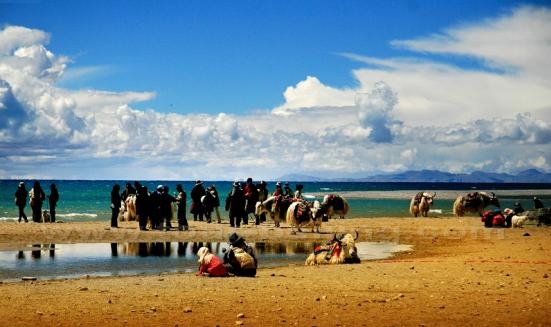
6. Potala Palace
Many visitors would like to take some photos of Potala Palace bringing their memory back home. There are many places to view and photograph Potala Palace sitting on a hill in the heart of Lhasa city.
You may walk around Potala Palace in a clockwise direction, a religion kora and take some pictures of Potala Palace from diffent angles and spots. Wandering on the path circling Potala Palace takes you approxi. 40 minutes.
There two best places to have an overview of Potala Palace for pictures taking – the Medicine King Hill and Palubuk Rock Temple both to the southwest of the palace. It takes you 2 yuan to take photos on the viewing platform on the hill. The entrance to Palubuk Temple costs you 20 yuan.
Check out Best Places to Take Picture of Potala Palace Lhasa for more information.
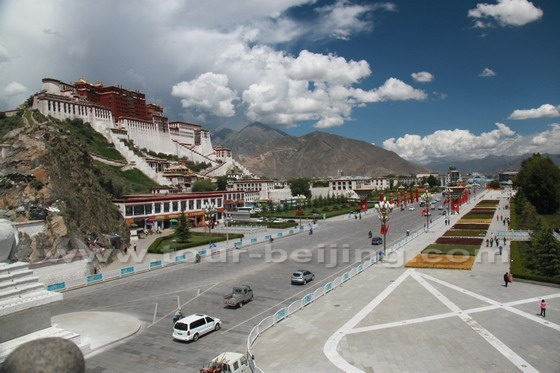
7. Jokhang Temple
Jokhang Temple, the fist Buddhist temple in Tibet, is located in the center of Lhasa city. Jokhang temple was built during the reign of King Songsten Gampo to celebrate his marriage with Princess Wencheng of Chinese Tang Dynasty. For most Tibetans it is the most sacred and important temple in Tibet.
The Jokhang Temple, a massive building consisting of three floors and an open roof all filled with chapels and chambers, has undergone extensive reconstructions and additions since the 7th century. The architectural style is based on the Indian design, and was later extended resulting in a blend of Nepalese and Tang Dynasty styles.
The main hall of the temple houses the Shakyamuni Buddha Statue, besides there are also famous statues of Chenresig, Padmsambhava and King Songtsan Gambo and his two famous foreign brides, Princess Wencheng of China and Princess Brikuti of Nepal.
Now it has been the most popular attraction in Lhasa and part of the UNESCO World Hentage Site “Historic Ensemble of the Potala Palace” and a spiritual center of Lhasa.
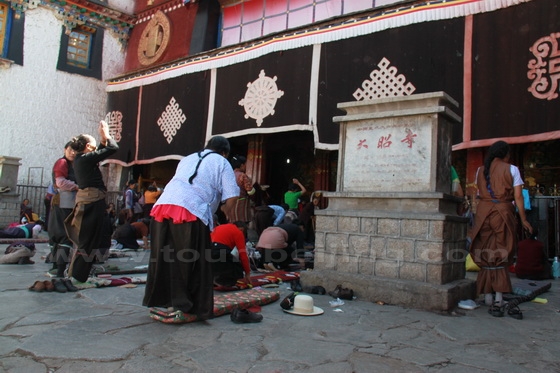
8. Tashilhunpo Monstery
Shigatse City is located 250km southwest of Lhasa and 480km northeast of Zhangmu Fort. It lies at the confluence of Yarlung Zangbo (aka Brahmaputra) River and the Nyang River (Nyanchue) with the altitude of 3800m. Shigatse City administrates 2 subdistricts, and 10 townships around the city. Shigatse City has a population of over 90,000.
Located on the east side of the hill in the west of the city of Shigatse, Tashilhunpo Monstery is the seat of panchen Lama and one of the six great Gelugpa temples along with Sera Temple, Drepung Temple, Gandan Monastery, Taer Monastery and Labrang Monastery. Built 1447 by Gendun Drup, the First Dalai Lama, the temple once housed over 4000 monks, now there are about 1,000.
Check out My Trip to Shigatse City for more information.
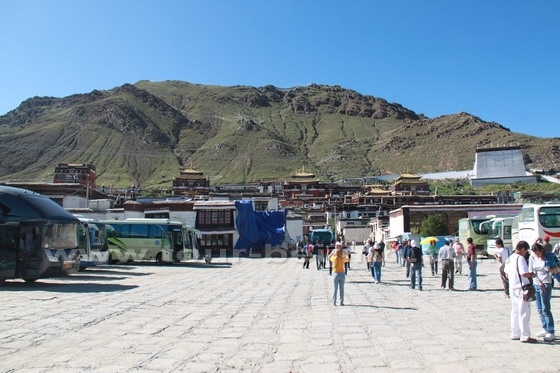
9. Yamdrok Lake
Yamdrok Lake ( or Yamdrok-Tso Lake and Yamdrok Yumtso Lake ) is one of the three holy lakes in Tibet. Yamdrok-Tso Lake is 130km long from east to west and 70km wide from north to south with a total perimeter of 250km and the surface area of 638 square km, average depth of 20-40 meters. It is the largest lake at the north foot of the Himalayas.
Yamdrok Lake is situated within Langkazi County (Nangartse) of the Shannan Region of Tibet on the way between Lhasa and Gyantse – 110km southwest of Lhasa and 140 east of Gyantse.
Yamdrok Yumtso Lake is a kind of low salt lake formed by the snow melted water from the snow capped mountains nearby. The lake looks like a holy sapphire. Under the clear azure sky, the clean water of the lake is as smooth as the surface of fine blue jade. Every year, many local Tibetans and visitors from Lhasa and from other places would come here for pilgrimage or sightseeing.
If you start from Lhasa to visit Yamdrok Lake, you have to climb over Kampala Pass (5000m) where you have a bird’s eye view of the amazing lake. The lake lies several hundred meters below the road or the pass. Under clear weather the lake is a fabulous shade of deep turquoise. Far in the distance is the huge snow mountain – Mt.Nojin Kangsang (7194).
10. Samye Monastery
Sitting Pretty on the foot of Mt. Haibu Rishen, Samye Monastery is situated in the serene Shannan Region, to the north of Tsangpo river. It is located 270 km southeast of Lhasa.
This is the first monastery in entire Tibet built between 775 and 779. It comprises of the three Buddhist idols, Buddha, Dharma and Sangha. This monastery is hugely popular with all Buddhist pilgrims from around the world. And the beauty of its construction beckons tourists who come to Tibet.
Any questions, just drop a line.





